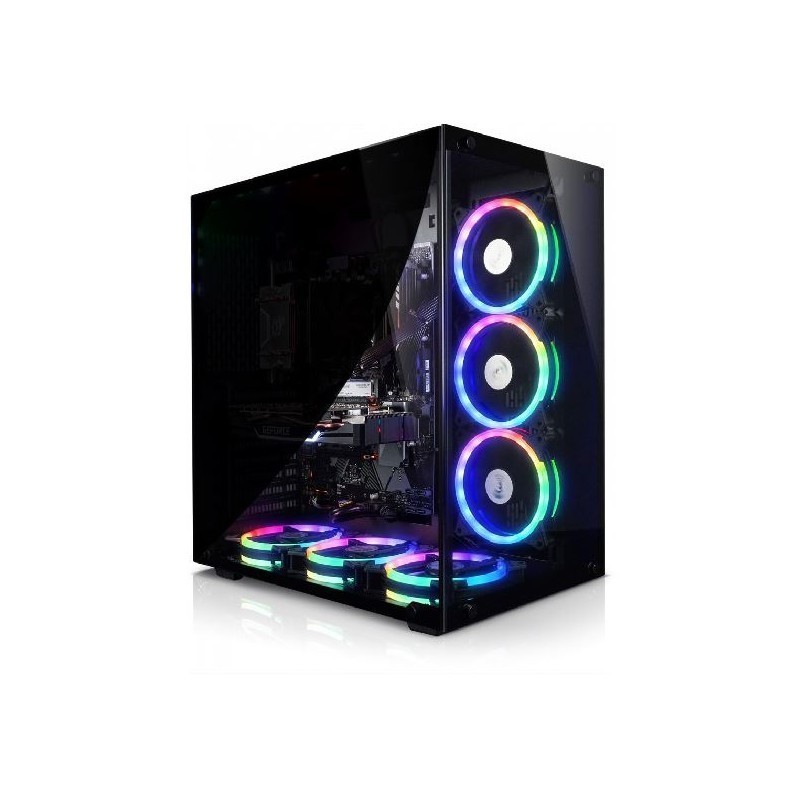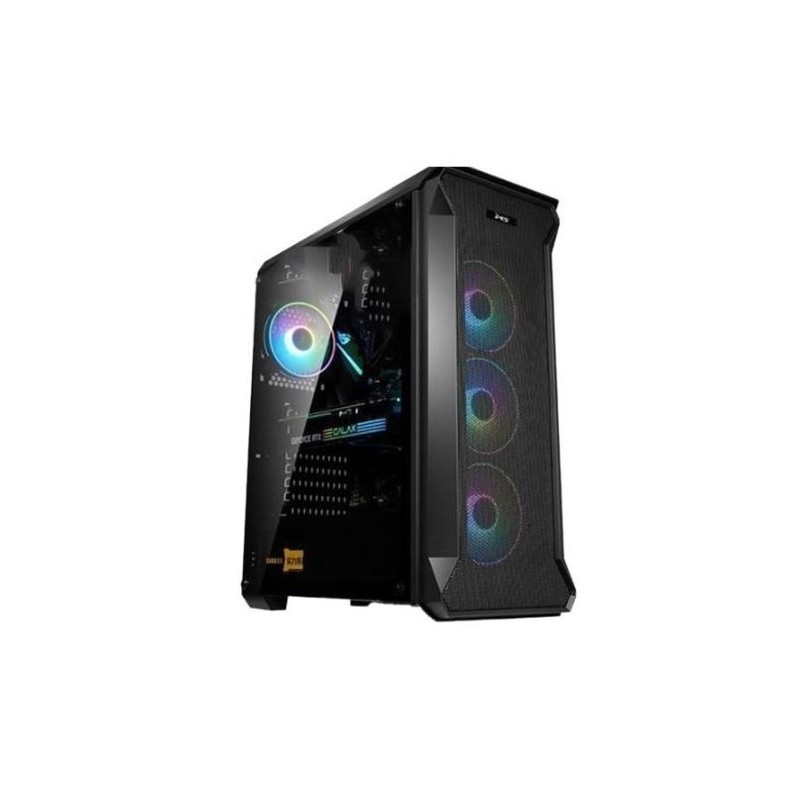Building a high-performance PC can be a rewarding experience. With the Intel Core i7-13700KF at the heart of your system, you can expect top-tier performance for gaming, content creation, and multitasking. This guide will walk you through the crucial components and steps to ensure you get the most out of your build.
Choosing the Right Components
Motherboard Selection
The motherboard is the backbone of your PC. For the Intel Core i7-13700KF, you need a motherboard with the LGA 1700 socket. Popular choices include models from ASUS, MSI, and Gigabyte. Look for features like PCIe 5.0 support, USB 3.2 Gen 2 ports, and robust power delivery. Opt for a motherboard that supports DDR5 RAM for future-proofing.
Ensure the motherboard has enough slots and ports for your needs. Consider the form factor (ATX, Micro-ATX, Mini-ITX) based on your case. Choosing the right motherboard ensures compatibility and optimizes your PC’s performance.
Memory (RAM)
For high performance, 16GB of RAM is the minimum, but 32GB is preferable for heavy multitasking and content creation. With the Intel Core i7-13700KF, DDR5 RAM is recommended due to its higher bandwidth and efficiency. Brands like Corsair, G.SKILL, and Kingston offer reliable options.
Higher memory speeds result in smoother performance, especially in demanding applications. Aim for RAM speeds of at least 4800MHz. Ensuring you have enough and fast RAM boosts overall system responsiveness.

Graphics Card Choice
NVIDIA vs. AMD
Choosing a graphics card depends on your primary use. For gaming, an NVIDIA RTX 3080 or AMD Radeon RX 6800 XT are excellent choices. For content creation, consider an NVIDIA RTX 3090 for its superior CUDA cores and AI capabilities.
Both brands offer strong performance, so consider your specific needs and budget. Check compatibility with your chosen motherboard and power supply. The right graphics card enhances gaming visuals and speeds up rendering tasks.
Compatibility and Performance
Ensure the graphics card fits in your case and has adequate cooling. Check the power supply requirements; high-end GPUs need substantial wattage. Compatibility with your monitor’s resolution and refresh rate is also crucial.
Properly pairing your GPU with the Intel Core i7-13700KF prevents bottlenecks and maximizes performance. Investing in a compatible and powerful graphics card ensures you can handle the latest games and professional applications.
Storage Solutions
NVMe vs. SATA SSDs
For the primary storage drive, an NVMe SSD is preferable due to its superior speed. Brands like Samsung, Western Digital, and Crucial offer reliable NVMe SSDs. A 1TB SSD provides ample space for the operating system, games, and software.
SATA SSDs, while slower, are still viable for secondary storage. They are more affordable and offer good performance for less critical data. Combining NVMe and SATA SSDs balances speed and storage capacity.
Capacity Considerations
Consider your storage needs. Gamers with large libraries and content creators dealing with large files should opt for 2TB or more. Keep in mind that SSDs perform better at lower capacities, so avoid filling them to the brim.
Planning your storage ensures you have enough space for applications, projects, and media. Adequate storage capacity prevents performance issues and allows room for future growth.

Cooling Solutions
Air Cooling
Air cooling is an efficient and affordable option. High-quality air coolers from brands like Noctua, Cooler Master, and be quiet! offer excellent performance. Ensure your case has good airflow to optimize cooling.
Choose a cooler compatible with the LGA 1700 socket and verify its size fits inside your case. Air cooling is sufficient for most builds unless you plan to overclock heavily. Efficient air cooling keeps your Intel Core i7-13700KF running at optimal temperatures.
Liquid Cooling
For heavy overclocking or a quieter operation, liquid cooling is ideal. AIO (All-In-One) coolers from Corsair, NZXT, and ASUS provide superior cooling performance. Ensure your case supports the radiator size of your chosen AIO.
Liquid coolers require more maintenance but offer better temperature control. They are also visually appealing if you have a tempered glass case. Investing in liquid cooling ensures your CPU remains cool, even under intense loads.
Power Supply Unit (PSU)
Wattage and Efficiency
A reliable power supply unit (PSU) is crucial. Calculate your power needs based on your components; websites like PCPartPicker can assist with this. For a high-performance build with the Intel Core i7-13700KF and a high-end GPU, a 750W to 850W PSU is recommended.
Look for 80 Plus Gold or higher efficiency ratings to ensure power efficiency and longevity. Brands like EVGA, Corsair, and Seasonic offer dependable options. Adequate wattage and efficiency prevent power issues and ensure stable performance.
Modular vs. Non-Modular
Modular PSUs allow you to use only the cables you need, reducing clutter and improving airflow. Non-modular PSUs are more affordable but come with fixed cables. Consider your budget and case space when choosing.
Modular PSUs offer better cable management and a cleaner build. Investing in a modular PSU enhances the aesthetics and maintenance of your PC. Proper cable management improves airflow, reducing temperatures.

Case Selection
Size and Compatibility
Choose a case that fits all your components comfortably. Mid-tower cases offer a good balance between size and roominess. Ensure it supports your motherboard form factor, GPU length, and cooler height.
Cases from brands like NZXT, Fractal Design, and Phanteks provide excellent build quality and airflow. Verify compatibility with your chosen cooling solution and PSU. A well-chosen case ensures a smooth build process and optimal component placement.
Aesthetics and Features
Beyond functionality, aesthetics play a role. Transparent side panels, RGB lighting, and clean cable management systems enhance your build’s appearance. Features like dust filters, easy-to-remove panels, and plenty of cable routing options simplify assembly and maintenance.
Choose a case that reflects your style and offers practical features. Investing in a stylish and functional case enhances your building experience and the final look of your PC. Aesthetic choices elevate your build and personal satisfaction.
Operating System and Software
Installing Windows or Linux
Most high-performance PCs run on Windows 10 or 11, but Linux is also an option for certain tasks. Ensure you have a bootable USB drive for installation. Windows offers a broad range of software compatibility, while Linux provides flexibility and performance for specific applications.
Follow installation guides to ensure a smooth setup process. Accurate installation ensures your system runs efficiently from the start. Choose the operating system that best suits your needs and software requirements.
Essential Software
Install essential drivers and software, starting with the chipset, GPU, and other component drivers. Tools like CPU-Z, GPU-Z, and HWMonitor help you monitor system performance. Applications like Steam, Adobe Creative Suite, or development tools enhance your productivity and gaming experience.
Regular software updates and maintenance keep your system running smoothly. Install antivirus software to protect your system. Essential software ensures optimal performance and a smooth user experience.
Conclusion
Recap of Key Points
Building a high-performance PC with the Intel Core i7-13700KF involves careful selection of components. Choose a compatible motherboard and fast DDR5 RAM. Select a powerful graphics card that meets your needs. Opt for NVMe SSDs for primary storage and consider capacity based on usage. Choose between air or liquid cooling based on your performance requirements. Ensure you have a reliable, efficient PSU. Select a case that fits your components and offers good aesthetics. Install the appropriate operating system and essential software for optimal performance.
Final Thoughts
Building a high-performance PC is a rewarding endeavor. With the Intel Core i7-13700KF at the core, you can expect exceptional performance. Careful selection and compatibility of components ensure a smooth building process and maximize your system’s potential. Follow this guide to create a powerful, efficient, and stylish PC that meets your gaming, content creation, and professional needs. Enjoy the satisfaction and performance of a well-built machine ready to tackle any task.


